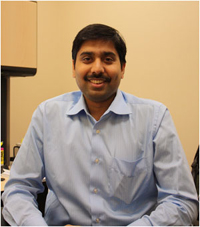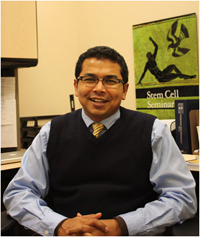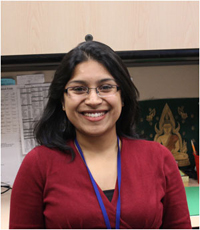Liver Diseases Branch Clinical Fellows
Clinical Fellow Description
Clinical fellows join the Branch for a period of 2-3 years and in special circumstances, additional years may be available. For a total of 2-4 months each year, clinical fellows are responsible for the primary care of patients admitted to the Liver Service and performing hepatology consults within the NIH Clinical Center. The hepatology consult service receives more than 300 consult requests each year. During this period, which constitutes an active learning process in clinical hepatology and liver biopsy interpretation, clinical duties occupy approximately 20 - 50% of the fellow’s time, depending on the year of fellowship, the remainder being available for research activities. Fellows work closely with attending physicians drawn from the staff of the Liver Diseases Branch itself, from other NIH clinical units, and from other hospitals in the greater Washington area. Hence, fellows are exposed to a variety of approaches to the evaluation, diagnosis and management of a wide spectrum of clinical liver diseases. Fellows also participate in various events; in the weekly liver biopsy review conferences, radiology conference once a month, and monthly visiting professor rounds. Typically fellows also attend the annual AASLD meeting. There is also an active Washington inter-hospital Liver Journal Club, which meets every 2 weeks in the homes of senior hepatologists in the Washington area. In view of the active clinical training, when required, and under certain circumstances, the program can constitute partial fulfillment of requirements for Gastroenterology Boards. When not involved in the patient care responsibilities, each fellow is available for essentially full-time research on projects mutually agreeable to the Fellow and preceptor(s). Such projects may involve either full-time laboratory work or clinical investigation of patients. Except when the research project itself involves working with patients, the only clinical activities required during this period are attendance at the outpatient clinic and participation in weekly patient rounds. The fellows are encouraged to take courses offered by NIH on clinical research, biostatistics, epidemiology, clinical pharmacology, medical ethics, and bioinformatics, and have the opportunity to enroll in the NIH-Duke’s Master Program in Clinical Research, which provides a rigorous curriculum in clinical research and is fully funded by NIH.
Hepatology fellows are eligible for appointment in either the Civil Service or the Public Health Service. The salary of clinical fellows is based on post-graduate years and mechanism of appointment.
 |
|
Naveen Gara, M.D.
My interests in Liver Diseases Research comprise of three different aspects. First, I am investigating the pathogenesis of renal tubular dysfunction in Tenofovir and Adefovir therapy in Chronic Hepatitis B. We hope to identify strategies to prevent this important but under-recognized side-effect. Next, I am testing the clinical utility of transient elastography in evaluating the degree of liver fibrosis in chronic Hepatitis C. Specifically, I am interested in knowing the extent to which transient elastography adds to our assessment above and beyond a liver-focussed physical exam and routine laboratory evaluation. My other prime area of research is withdrawal of long-term oral therapy in Chronic Hepatitis B. I am curious to know what proportion of patients on long-term therapy for Chronic Hepatitis B can safely be stopped. The results will provide a much needed answer since prospective data is lacking in this regard. |
 |
|
Souvik Sarkar, M.D., Ph.D.
My research interests are focused on two very distinct viruses, hepatitis C and hepatitis E and on understanding of symptoms commonly associated with liver diseases. Fatigue is the most common symptom associated with chronic liver diseases but little understood. My work focuses on understanding fatigue using a variety of tools in different cohorts of liver disease patients. I am also interested in understanding molecular mechanisms of trafficking of the hepatitis C virus. |
 |
|
Michele M. Tana, M.D.
My research interests include: quality of life in patients with chronic liver disease, early detection of and prediction of HCC, PBC, and viral hepatitis. |
 |
|
Niharika Samala, M.D.
I was born and brought up in India. My pursuit for training in clinical research and liver diseases brought me to liver diseases branch at NIH.
My research interests include hepatitis E, role of immunity in liver disease and Non-alcoholic steatohepatitis (NASH). Hepatitis E has been known to be a disease of the non-developed world until a recent surge in reports of cases in developed countries. Appearance of chronic hepatitis E in immunocompromised hosts raises the need for treatment. My research aims at understanding the clinical impact of hepatitis E infection in the US. It is believed that it is not always the environmental trigger that results in disease, it is the host’s response to them that manifests as disease. I am interested in understanding the role of immunity in liver disease. I am particularly interested in liver disease in stem cell transplant patients. I am excited by the complexity of my question in this patient population. NASH interests me for several reasons. It affects a significant demographic of the developed countries. Its etiopathogenesis is not completely understood. We do not have a potent pharmacologic therapy yet.
|
Page last updated: January 26, 2012